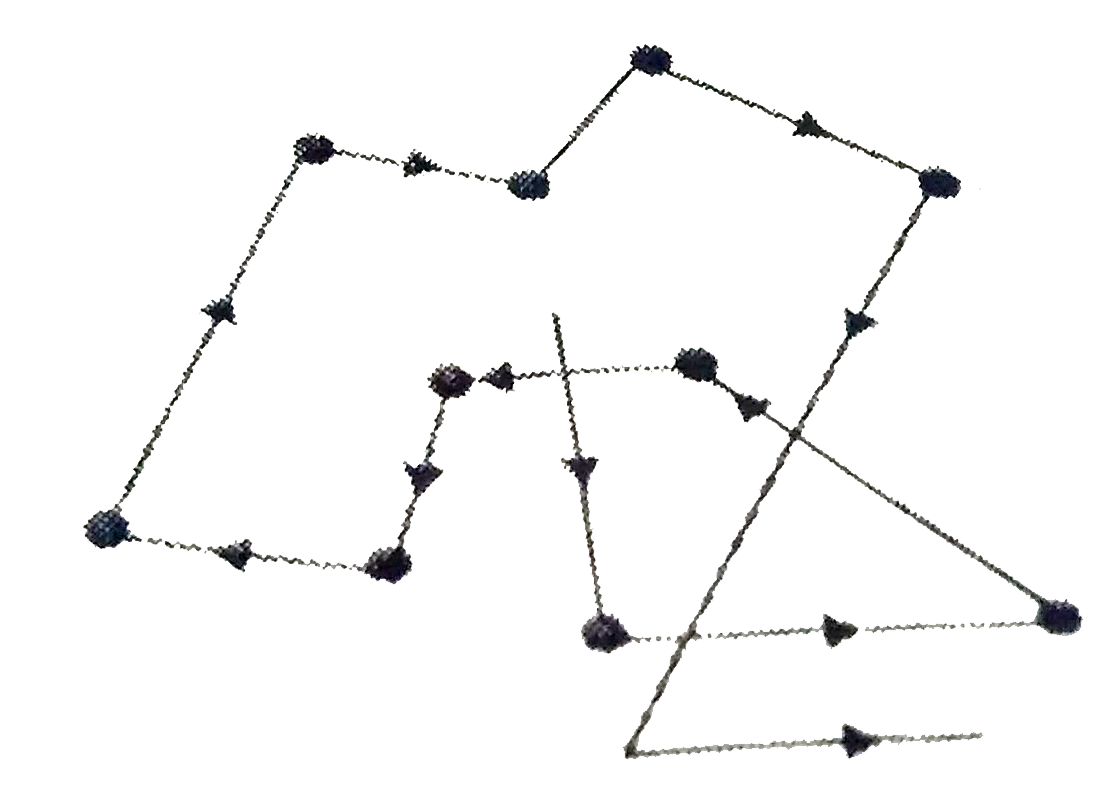Explain the following terms :
(a) Peptization (b) Electrophoresis (c) Dialysis (d) Brownian movement
Text Solution
(a) Peptization : The term has originated from the digestion of proteins by the enzyme pepsin. Peptization may be defined as (the process of converting a precipitate into colloidal sol by shaking it with dispersion mediumin the presence of a small amount of electrolyte). The electrolyte used for this purpose is called peptizing agent. This method is applied, generally, to convert a freshly prepared precipitate into a colloidal sol. During peptization, the precipitate adsorbs one of the ion of the electrolyte on its surface. The ion adsorbed on the surface is common either with the anion or cation of the electrolyte. This causes the development of positive or negative charge on precipitates which ultimately break up into smaller particles having the dimensions of colloids.

(b) Electrical Properties (Electrophoresis) : The particles of the colloids are electrically charged and carry positive or negative charge. The dispersion medium has an equal and opposite charge making the system neutral as a whole. Due to similar nature of the charge carried by the particles, they repel each other and do not combine to form bigger particles. That is why, a sol is stable and particles do not settle down. Arsenious sulphide, gold, silver and platinum particles in their respective colloidal sols are negatively charged while particles of ferric hydroxide, aluminium hydroxide are positively charged. The existence of the electric charge is shown by the phenomenon of electrophoresis. It involves the 'movement of colloidal particles either towards the cathode or anode, under the influence of the electric field'. The apparatus used for electrophoresis as shown in fig.

The colloidal solution is placed in a U - tube fitted with platinum electrodes. On passing an electric current, the charged colloidal particles move towards the oppositely charged electrode, Thus, if arsenic sulphide sol is taken in the U - tube, in which negatively charge particle of arsenic sulphide move towards the anode.
⋅ Earlier this process was called cataphoresis because most of the colloidal sols studied at that time were positively charged and moved towards cathode.
(c) Dialysis : It is a process of removing a dissolved substance from a colloidal solution by means diffusion through suitable membrane. Since particles in true solution (ions or smaller molecules) can pass through animal membrane or parchment paper or cellophane sheet but colloidal particle do not, the appratus used for this purpose is called Dialyser.
A bag of suitable membrane containing the colloidal silutions is suspended in a vessel through which fresh water continously flow. The molecules and ions (crystalloids) diffuse through membrance into the outer water & pure colloidal solution is left behind.
(d) Mechanical Properties :
Brownian movement : Robert Brown, a botanist, discovered in 1827 that pollen grains placed in water do not remain at rest but move about continuously and randomly. Later on, this phenomenon was observed in case of colloidal and randomly. Later on, this phenomenon was observed in case of colloidal particles when they were seen under an ultramicroscope. The particles were seen to be in constant zig-zag motion as shown in fig. This zig-zag motion is called Brownian movement

|
Topper's Solved these Questions
- SURFACE CHEMISTRYBOOK - RESONANCECHAPTER - SURFACE CHEMISTRYEXERCISE - Section (F)
5 Videos
- SURFACE CHEMISTRYBOOK - RESONANCECHAPTER - SURFACE CHEMISTRYEXERCISE - Exercise-1, Part-II, Section (A)
8 Videos
- SURFACE CHEMISTRYBOOK - RESONANCECHAPTER - SURFACE CHEMISTRYEXERCISE - Section (C)
7 Videos
- STRUCTURAL IDENTIFICATIONBOOK - RESONANCECHAPTER - STRUCTURAL IDENTIFICATIONEXERCISE - Advanced level Problems (Part-III)
12 Videos
- TEST PAPERSBOOK - RESONANCECHAPTER - TEST PAPERSEXERCISE - PT-03
1 Videos
Similar Questions
Explain the following terms :
Dialysis
View SolutionExplain the following terms:
Dialysis
View SolutionExplain the following terms:
Electo-dialysis
View SolutionExplain the following terms :
Electrophoresis
View SolutionExplain the following terms :
(i)Peptization (ii)Loyphobic colloids (iii)Dialysis
View SolutionExplain the following terms :
(i)Peptization (ii)Loyphobic colloids (iii)Dialysis
View SolutionExplain the following terms:
(i) Peptization (ii) dialysis (iii) Hardy-Schulze ruel
View SolutionExplain the following terms:
(i) Peptization (ii) dialysis (iii) Hardy-Schulze rule
View SolutionExplain the following terms : (i) Electrophoresis (ii) Coagulation (iii) Dialysis (iv) Tyndall effect.
View SolutionExplain the following tem : Electrophoresis.
View Solution
